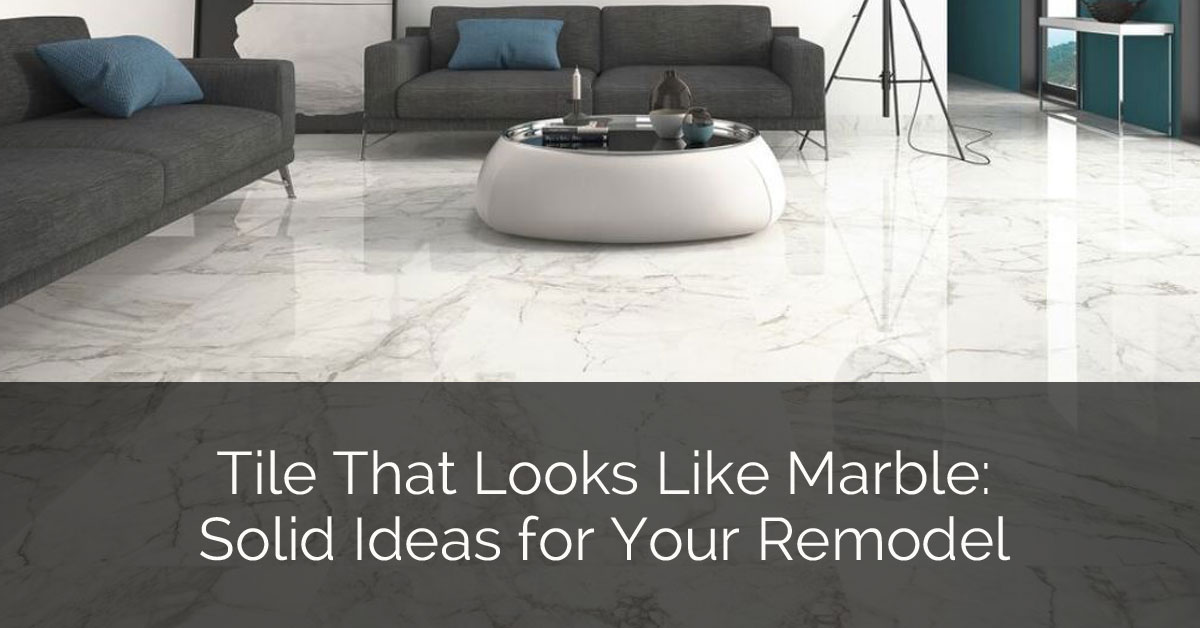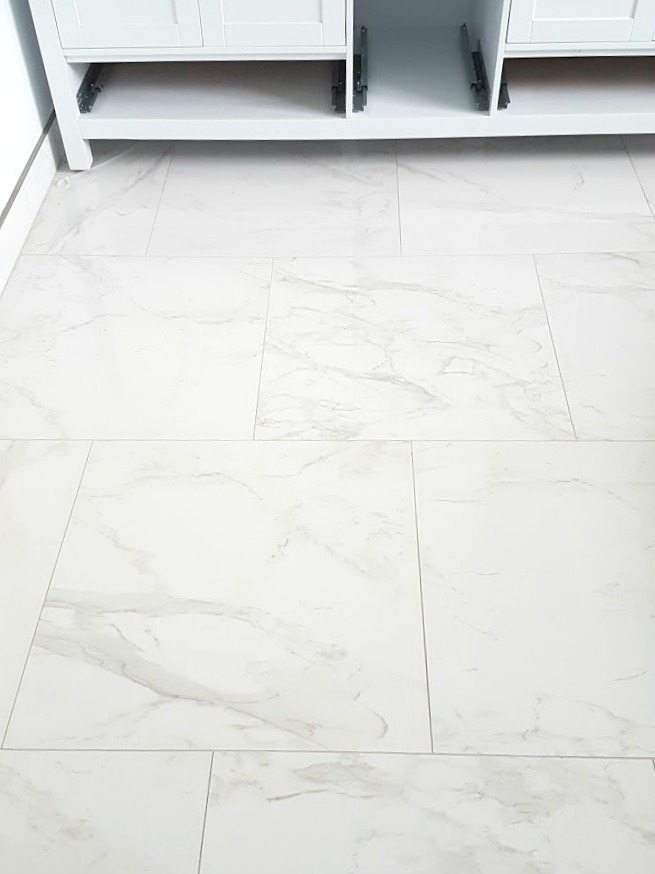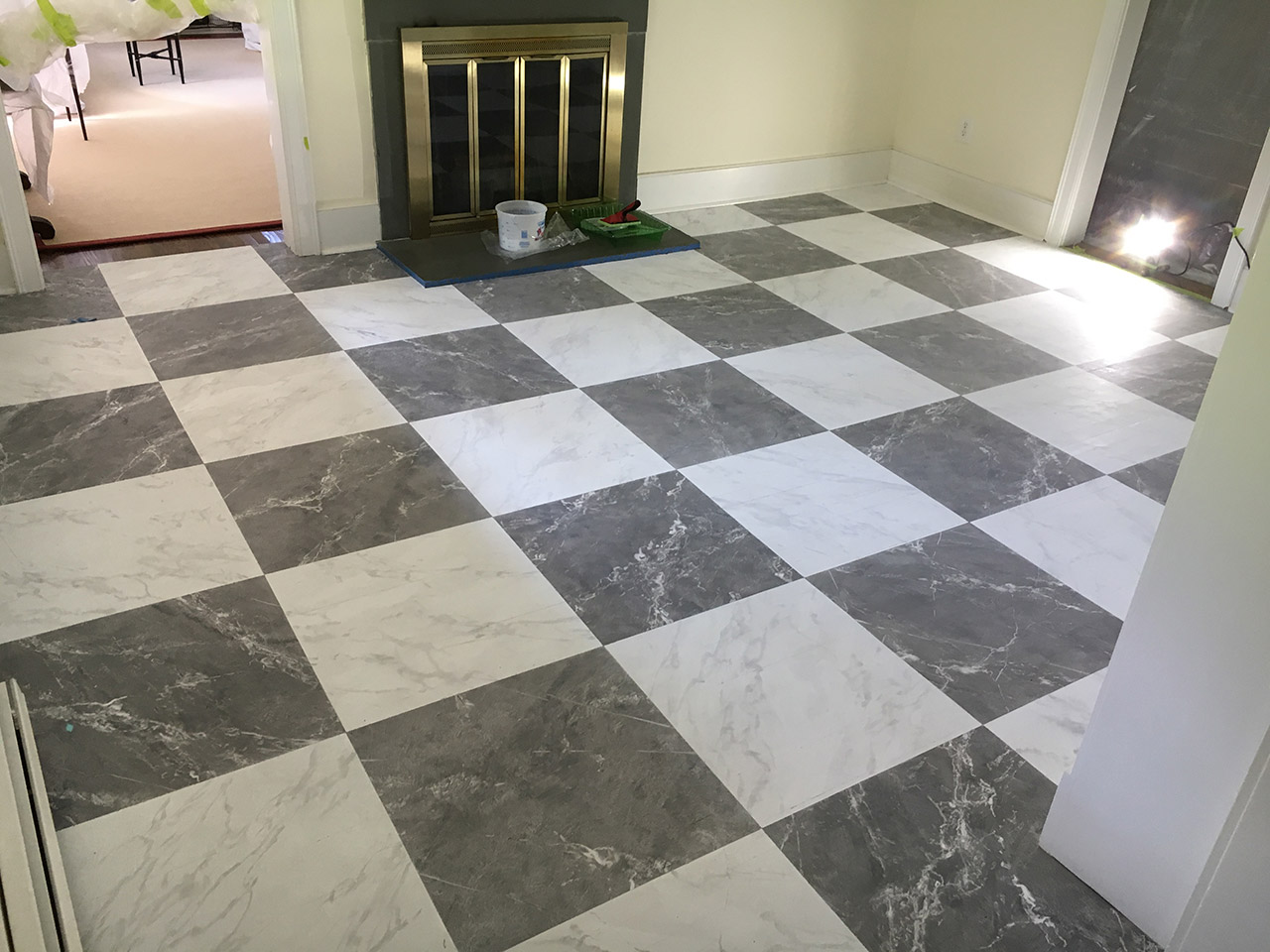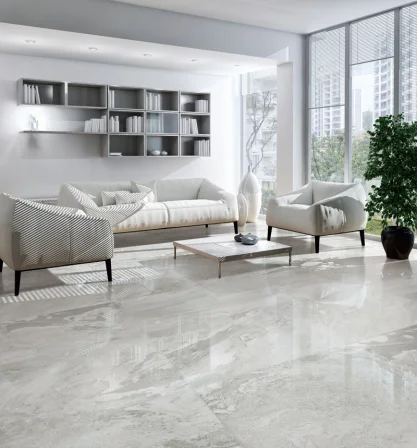Comparing Fake Marble to Real Marble: Pros and Cons
When I first considered redoing my floors, I was torn between the luxurious appeal of real marble and the practical benefits of fake marble tiles. Both options have their unique pros and cons, and making an informed decision requires a deep dive into their respective qualities.
- Aesthetic Appeal: Real marble has an undeniable elegance, with its natural veining and unique patterns that can make any space look opulent. Fake marble tiles, while designed to mimic this beauty, can sometimes lack the depth and variation found in real marble. However, advances in manufacturing have led to stunningly realistic fake marble tiles that can be hard to distinguish from the real thing.
- Durability and Longevity: Marble is a porous stone, making it susceptible to stains, scratches, and etching, especially in high-traffic areas. This means it requires regular sealing and maintenance to keep its appearance. Fake marble tiles, on the other hand, are typically made from more durable materials like porcelain or ceramic, which are resistant to stains and scratches. This makes fake marble a more practical choice for households with kids or pets.
- Cost Considerations: One of the most significant differences between real and fake marble is the cost. Real marble is expensive, not just in terms of material but also the labor required for installation. Fake marble tiles are a budget-friendly alternative that can provide a similar look without breaking the bank. This makes it an attractive option for those wanting the marble look without the hefty price tag.
- Installation Process: Installing real marble requires professional expertise due to its weight and the need for precise cuts. It’s a labor-intensive process that adds to the overall cost. Fake marble tiles are generally easier to install, and some types, like vinyl, can even be a DIY project. This ease of installation can save both time and money.
- Environmental Impact: For those concerned about sustainability, fake marble tiles often have a smaller environmental footprint compared to real marble. The extraction of natural marble involves significant quarrying, which can be environmentally damaging. Many fake marble tiles are made from recycled materials and can be a more eco-friendly option.
- Versatility and Design Options: Fake marble tiles come in a wide range of colors, patterns, and sizes, offering more design flexibility. Real marble’s color palette is limited to what nature provides. This versatility allows for more creativity in design, making fake marble tiles suitable for various styles and settings.

Different Types of Fake Marble Tiles: Vinyl, Porcelain, and Ceramic
Exploring the world of fake marble tiles, I discovered a variety of options, each with its unique properties. Vinyl, porcelain, and ceramic tiles all offer different benefits, and understanding these can help in choosing the right tile for your project.
Vinyl Tiles Vinyl tiles are a popular choice for those looking for an affordable and easy-to-install option. They are available in peel-and-stick formats, making them a favorite for DIY enthusiasts. Vinyl tiles are also soft underfoot, providing a bit of cushion compared to harder materials. However, they can be less durable in high-traffic areas and might need replacement sooner than other types.
Porcelain Tiles Porcelain tiles are renowned for their durability and resistance to moisture. They are made from denser clay and fired at higher temperatures, resulting in a robust and long-lasting tile. Porcelain can closely mimic the look of real marble, with detailed veining and a polished finish. It’s an excellent choice for areas prone to moisture, like bathrooms and kitchens, due to its water-resistant properties.
Ceramic Tiles Ceramic tiles are another versatile option. They are generally less expensive than porcelain but still offer good durability. Ceramic tiles are made from a mix of clay and other natural materials, then glazed to create a hard, protective surface. They come in a wide range of colors and patterns, allowing for creative design solutions. However, they are slightly more porous than porcelain, making them less ideal for very wet areas.
Comparing Durability When comparing durability, porcelain stands out as the most robust option, followed by ceramic and then vinyl. If longevity is a key concern, porcelain is the best bet. However, for areas with less foot traffic or where ease of installation is crucial, vinyl and ceramic can still be excellent choices.
Installation and Maintenance Vinyl tiles are the easiest to install and require minimal maintenance. Porcelain and ceramic tiles need a bit more effort during installation, often requiring professional help for the best results. Maintenance-wise, all three types are relatively easy to clean, but porcelain’s low porosity makes it particularly resistant to stains and spills.
Aesthetic Versatility Vinyl tiles have come a long way in terms of aesthetics, offering impressive marble-like patterns. Porcelain and ceramic tiles, however, often provide a more realistic marble appearance due to their detailed manufacturing processes. With a wide variety of finishes and styles available, these tiles can suit any design preference, from modern to classic.
Installation Process: How to Lay Fake Marble Floor Tiles
Installing fake marble floor tiles can be a rewarding DIY project or a task for professionals, depending on your comfort level with home improvement tasks. I’ve found that understanding the process can help you decide the best approach for your project.
Preparing the Surface The first step in the installation process is preparing the surface. Ensure the floor is clean, dry, and level. Any bumps or dips can affect the final appearance of your tile installation. For concrete floors, you might need to apply a leveling compound. For wooden floors, a cement backer board can provide a stable base.
Planning the Layout Planning your tile layout is crucial for a professional-looking finish. Start by finding the center of the room and working outwards. This helps in balancing the design and ensuring that cut tiles at the edges are of similar size. Laying out the tiles beforehand can also help you visualize the final look and make adjustments before adhering to them.
Applying the Adhesive Once the layout is planned, it’s time to apply the adhesive. Use a notched trowel to spread the adhesive evenly on a small section of the floor. Working in small sections ensures the adhesive doesn’t dry out before you lay the tiles. Be sure to choose the right adhesive for your tile type – vinyl adhesive for vinyl tiles, and a thin-set mortar for porcelain and ceramic tiles.
Laying the Tiles Begin laying the tiles according to your planned layout. Press each tile firmly into the adhesive and use spacers to ensure consistent gaps for grout. Check regularly with a level to make sure the tiles are even. For vinyl tiles, peel-and-stick versions can simplify this process, but precision is still key to achieving a seamless look.
Cutting Tiles to Fit Inevitably, you’ll need to cut tiles to fit around edges and obstacles. A tile cutter or a wet saw can make precise cuts for porcelain and ceramic tiles, while a utility knife can handle vinyl tiles. Measure carefully and cut slowly to avoid mistakes. Always wear safety gear when cutting tiles to protect yourself from sharp edges and dust.
Grouting and Sealing After the tiles are laid and the adhesive has set, it’s time to grout the joints. Spread the grout over the tiles using a rubber float, pressing it into the gaps. Wipe off excess grout with a damp sponge before it dries. Once the grout is dry, you may need to apply a sealer to protect it from stains and moisture. This step is particularly important for porcelain and ceramic tiles.
Maintaining and Cleaning Your Fake Marble Floor
Maintaining and cleaning fake marble floors is relatively straightforward, but it does require some regular care to keep them looking their best. Here’s how I keep my fake marble floors pristine.
Daily Cleaning Daily cleaning is essential to prevent dirt and grime from building up. I use a soft broom or a vacuum cleaner with a hard floor attachment to remove dust and debris. Avoid using a vacuum with a beater bar, as it can scratch the surface of the tiles. A quick sweep or vacuum every day keeps the floors looking fresh.
Weekly Mopping Mopping the floors once a week helps in removing any stubborn dirt. I prefer using a damp mop with a mild, pH-neutral cleaner specifically designed for tile floors. Avoid harsh chemicals and abrasive cleaners, as they can damage the finish of the tiles. After mopping, it’s crucial to dry the floor with a clean towel to prevent water spots.
Dealing with Spills Spills should be cleaned up immediately to prevent staining. Even though fake marble tiles are more resistant to stains than real marble, allowing liquids to sit can still cause discoloration. I always keep a soft cloth handy to blot spills as soon as they happen. For tougher stains, a mixture of water and baking soda can be effective.
Protecting the Surface To protect the surface of your fake marble floor, consider using rugs and mats in high-traffic areas. Felt pads under furniture legs can prevent scratches when moving items around. It’s also wise to avoid walking on the tiles with high heels or other hard-soled shoes that can cause damage.
Periodic Deep Cleaning Every few months, a deep cleaning can rejuvenate the tiles and grout. I use a soft-bristle brush and a mixture of water and a gentle cleaner to scrub the tiles and grout lines. For more stubborn grout stains, a specialized grout cleaner can be used. After deep cleaning, it’s a good idea to reseal the grout to maintain its protective barrier.
Preventive Maintenance Preventive maintenance includes keeping the tiles and grout sealed and addressing any damage promptly. Inspect the tiles regularly for chips or cracks, and repair them as needed to prevent further damage. Keeping the grout lines sealed helps in maintaining the overall appearance and longevity of the floor.
Cost Analysis: Budget-Friendly Alternatives to Real Marble
When I decided to explore alternatives to real marble, the cost was a significant factor. Fake marble tiles offer a range of budget-friendly options without compromising on style. Here’s a breakdown of how they compare in terms of cost.
Material Costs The material cost of fake marble tiles varies depending on the type you choose. Vinyl tiles are the most affordable, with prices ranging from $1 to $3 per square foot. Ceramic tiles are slightly more expensive, typically costing between $2 and $5 per square foot. Porcelain tiles, known for their durability and realistic appearance, can cost between $3 and $7 per square foot. In contrast, real marble can cost anywhere from $10 to $20 per square foot or more, making fake marble a much more economical choice.
Installation Costs Installation costs can significantly impact your budget. Vinyl tiles are the easiest to install and can often be a DIY project, saving on labor costs. Ceramic and porcelain tiles, while still possible for DIY, often require professional installation for the best results. Professional installation can add $5 to $10 per square foot to the total cost. In comparison, installing real marble typically costs $10 to $30 per square foot due to the complexity and skill required.
Maintenance Expenses Over time, maintenance costs can add up. Real marble requires regular sealing and special cleaning products to prevent stains and etching, which can be expensive. Fake marble tiles, particularly porcelain and ceramic, are low-maintenance and only need occasional sealing of the grout lines. The cost of cleaning products for fake marble is also lower, as they don’t require specialized cleaners.
Longevity and Replacement Costs While real marble is durable, its susceptibility to damage can lead to costly repairs or replacements. Fake marble tiles, especially porcelain, are highly durable and resistant to wear and tear. This longevity reduces the need for frequent replacements, making fake marble a more cost-effective option in the long run. Vinyl tiles, although less durable, are so affordable that replacing damaged tiles isn’t a significant financial burden.
Aesthetic Value vs. Cost The aesthetic value of real marble is unmatched, but fake marble tiles have made significant strides in replicating their beauty. For a fraction of the cost, you can achieve a similar luxurious look. Investing in high-quality fake marble tiles, particularly porcelain, can provide an excellent balance between aesthetic appeal and cost.
Environmental Considerations Environmental impact can also influence cost. Real marble extraction involves significant environmental disruption, which can be a consideration for eco-conscious homeowners. Many fake marble tiles are made from recycled materials and have a smaller environmental footprint. Choosing eco-friendly options can sometimes come with a higher upfront cost but can lead to savings through tax incentives and energy efficiency in the long run.
Design Ideas: Incorporating Fake Marble Tiles into Your Home Decor
When it comes to incorporating fake marble tiles into home decor, the possibilities are endless. Here are some design ideas that I’ve found particularly inspiring.
Elegant Entryways An elegant entryway sets the tone for the entire home. Using fake marble tiles in a herringbone or diagonal pattern can create a stunning first impression. Pairing the tiles with a statement piece, like a large mirror or an ornate console table, can enhance the luxurious feel. Adding a plush rug can provide a warm contrast to the cool marble look.
Stylish Bathrooms Fake marble tiles are perfect for creating a spa-like bathroom. Using large-format tiles can minimize grout lines and create a seamless look. Consider using fake marble tiles for both the floor and the shower walls to create a cohesive design. Adding gold or brass fixtures can complement the marble look and add a touch of elegance.
Modern Kitchens In the kitchen, fake marble tiles can be used for both the floor and the backsplash. For a contemporary look, opt for large tiles with subtle veining. Pairing the tiles with sleek, modern cabinets and stainless-steel appliances can create a stylish and functional space. A marble-look island countertop can be a stunning centerpiece in the kitchen.
Cozy Living Rooms In the living room, fake marble tiles can be used to create a sophisticated and cozy atmosphere. Using tiles with a matte finish can add a soft, inviting touch. Consider incorporating a faux marble fireplace surround to make a bold statement. Complementing the tiles with soft furnishings, like velvet sofas and plush rugs, can create a balanced and inviting space.
Outdoor Patios Fake marble tiles aren’t just for indoor spaces. They can also be used to create beautiful outdoor patios. Using durable porcelain tiles ensures they can withstand the elements. Pairing the tiles with outdoor furniture and potted plants can create a serene and stylish outdoor living space. Adding outdoor lighting can enhance the ambiance and make the space usable even after dark.
Accent Walls For a unique design element, consider using fake marble tiles to create an accent wall. This can work in any room, from the living room to the bedroom. An accent wall can add depth and interest to the space. Pairing it with complementary colors and textures, like wooden furniture or soft textiles, can create a cohesive and visually appealing design.
My Favorite Porcelain Marble Tile – Angela Marie Made
Livelynine Peel and Stick Floor Tile White Marble 12X12 Inch
Porcelain Tiles You Won’t Believe Aren’t Marble
Tile That Looks Like Marble: Solid Ideas for Your Remodel
Choosing (faux) Carrara Marble Floor Tile for the Bathroom
Faux Marble Floors
Floor Porcelain Tiles Fake Marble Ceramic Polished Flooring
Related Posts:
.jpg)
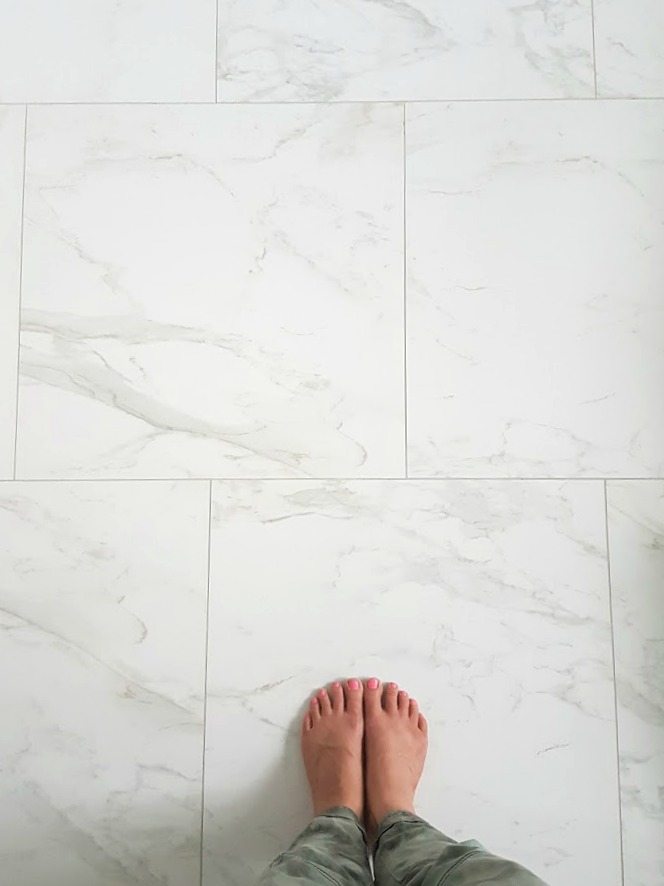
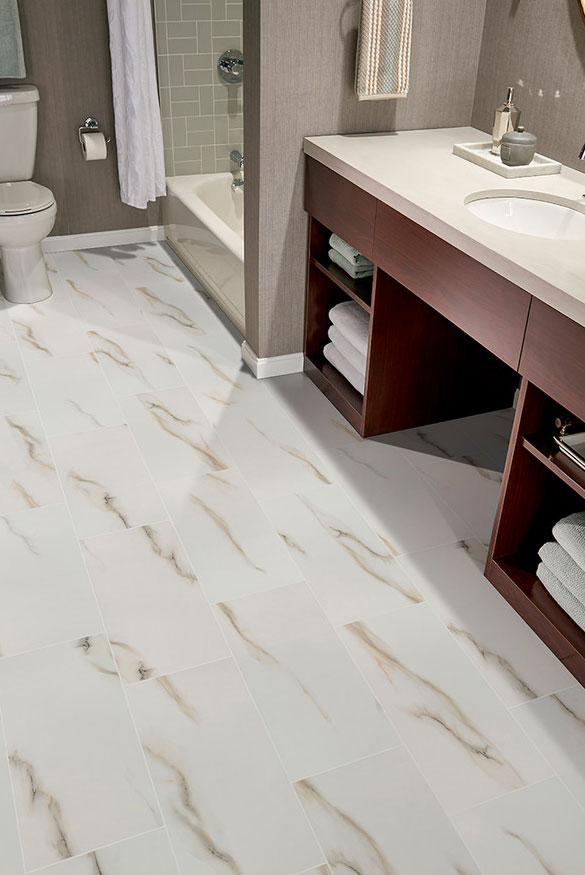

.jpg)
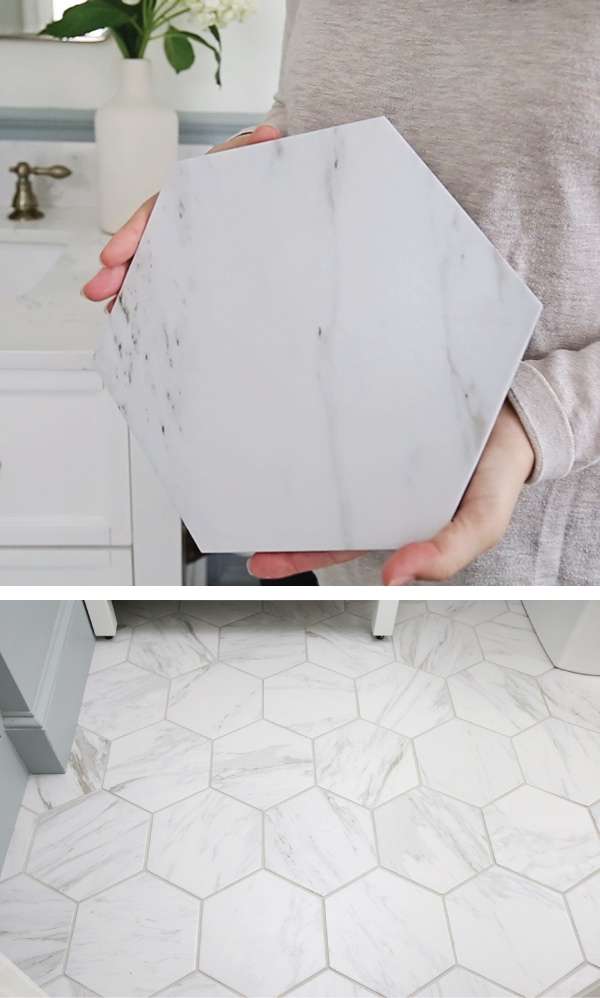

.png)
